The huge white structure, covered with tiny mirror chips, radiates and glistens in the sun's rays. It's a WOW moment when I round the corner and first see it. Such a sight was totally unexpected. Reactions of others nearby is the same. Once it is completed in 2070, it will most likely be one of the most stunningly beautiful Temples in the world, if not already so. Surrounded by a pond, I must walk across the bridge leading to it. On either side of the bridge are ghastly hands of the dead reaching up from hell. The brilliance and beauty of the building is either tempered or enhanced by the morbid statues and hanging heads. Each visitor has to evaluate their own emotions amidst all this contrasting display.
The overnight bus ride to Chiang Rai, Thailand was a contrast of emotions, much like the emotions garnered by the White Temple
. I took the "Gold" bus, the top of the line choice. The wide, luxury seats have more leg room than in a 'regular bus'. There is a smartly uniformed attendant that walks the isles to assist you. A glass partition separates the driver from the passengers, for noise control, I guess. Drinks, snacks and complete meals are served along the route. All are included in the price of the ticket.
It's dark when the bus pulls out from Pattaya, Thailand. It leaves on time, often not the case with lower quality busses. There are numerous buttons on the seat arm-rests. No one is in the seat next to me, so I really have a lot of space to myself. I booked my ticket about a week in advance, by going to the station in person. I looked at the chart and picked the seat right behind the glass divider, on the side opposite the driver. I am the first to book a ticket on this Gold Bus. I have perfect views of the road ahead through the large bus windshield.
I seldom sleep on a bus, train, plane or in a car
. Everyone around me always has no problems sleeping, but I just look out the window the entire trip, usually.
I cannot read what the buttons on my seat arm rest are for. A drink and snack have already been served. The meal will be served in about an hour. I explore pushing the little buttons. Something gouges me in my back. It feels like when someone puts their knee in the back of your seat. But, this Gold Bus has ample leg room, so that is not likely what is happening.
Then, the pressure from the seat back begins to move. It moves around and up and down. It is a back massager. After a few minutes, I have been massaged enough. But, I cannot find the button to cut it off. I move to the empty seat next to me. I cannot see out the side window very good from here, though. The attendant is right in front of me, but is on the other side of the glass divider. I move back to my seat eventually and fiddle with all the buttons, until finally the seat stops moving!
Your seat not only has a head pillow waiting for you when you get on, but also a cellophane wrapped blanket
. The Gold Bus is advertised as having air-con. Many busses I have ridden in Asia are non-air-conditioned. But, the Gold Bus is an air-conditioned bus. That's not the reason I bought a ticket on this bus, though. Besides all the personal attention you get, it makes less stops, and gets me to my destination in about 12 hours. Nevertheless, for those that find air-con important, it has air-con. I soon fine out it has lots of it. The reason for the blanket becomes apparent. The digital read out overhead says the temperature inside the bus is 22 degrees Celsius. That is 71.6F. Not too bad, but cool. Soon it continues to drop until it is 19C = 66F. It stays there all night. The blanket is too light. Everyone is covered up. You would think a nice bus would have a temperature control that says 'medium' or 'low', but this one does not. I know because the operators never changed it to a more comfortable temperature.
Snacks throughout the night were brought around and a meal for the evening
. In the morning, about an hour before arriving at our destination, a breakfast was served . . . all eaten while I was wrapped in my blanket. Next time I will take the economy bus, without air and food.
By 8 the next morning, I arrived in Chiang Rai, Thailand. Chiang Rai is in northern Thailand near the Myanmar and Laos border. The last time I was in Thailand, earlier in the year, I spent time in Chiang Mai but did not get to Chiang Rai. It's a comfortable little place that most travelers enjoy a few days in.
The bus has two terminals. For departures, you leave from the 'old' station, in the center of town. The 'new' station is for arrivals from the south. It is 5 miles from town and requires you to hire a tuk-tuk to get into the city. I am learning about the 'tuk-tuk mafia'.
I pay the tuk tuk and it takes me to the center of town and the old bus station. From here I can walk to Fun-D Hostel
.
Four wifi hot spots, laundry room with dryer, clean showers fully stocked with soap, and key cards to power up your very own power outlet next to your bunk bed, Fun-D (meaning “Sweet Dreams” in Thai) Hostel is a luxury for $7 a night.
Good english is spoken at Fun-D and they offer me a map with the important things to see noted on it. Wifi is good in the rooms as well as in the common area. There is a computer room with large pillows to relax on while reading or listening to your music. It's very clean and secure. At your bedside there is an electrical outlight. This is so very important to backpackers to recharge their electronics. Often, in many hostels, it is not easy to find. A reading light is supplied to each bed. Breakfast is included in the 650 baht ($7) cost of the room.
One day while in the computer room alone for a while, researching my next route out of town, one of the staff came with a tray of complimentary hot tea for me to enjoy
. What a thoughtful gesture.
Following my first day of 'walking the town to get my bearings' routine, I caught a local bus to go see the "White Temple". It is 7 miles from town. The bus has hard seats and standing room. Windows do not work and it rattles as it rolls along. Many stops are made and it is slow traveling. Only 3 foreigners are on board and the operators do not speak english. But, all this is made up for by the fact there is no air-conditioning.
Eventually, the bus stops along the road and the driver points for me and two other foreigners to get off. He points down a road. Apparently, somewhere in that direction, is the White Temple.
We walk a ways and then we see it. It is possibly the most peculiar temple ever built. A millionaire artist used his own money to fund the construction of the temple, his offering to Buddha. Before reaching the grounds, there are Skeletons and Demons, warning the visitors of the dangers of alcohol and smoking
.
.
It is so different from the traditional style of most Thai temples. Instead of all the colors, this temple is whitewashed and has thousands of small, tiny mirror chips that gleam and glisten in the sunlight. I find out the artist used white color to represent Buddha's purity. The small mirrors symbolize Buddha's teachings that people should search their own minds and "reflect" kindness to others.
The entire large buildings and statues on the grounds are connected with riddles, Buddhist philosophy and teachings.
A bridge leading to the temple takes me over a pond surrounding the temple, where dozens of white and black fish swim, guarded by statues of dragons and other mythical creatures. The bridge represents the "Cycle of Rebirth".
Looking down, just inches from my feet, as I cross the bridge, I see the eerie sight of ghastly looking white hands reaching up from below. Although just sculptured hands, it is a little chilling to walk within inches of them
.
Reaching up from "hell", the hands symbolize the way to happiness is through overcoming carnal cravings. They hope to portray the message that trials, tribulations and temptations can distract you on your journey and from the true path to Heaven. Demon faces, twisted and grotesque, watch and mock the visitor as he strives to rid his soul from the cravings. They are the faces of those who never overcame the evils of the world and never reached paradise.
Once the carnal cravings have been overcome, represented by the bridge, you reach the front of the "Gate of Heaven". The gate is guarded by Rahu, the One that controls men's fate, on the left. On the right side of the door is Death, the One who controls men's lives.
After crossing the bridge you find yourself at the White Temple, the Abode of Buddha. The building of it was started in 1996 and is not expected to be finished until 2070.
There is a sign saying foreigners are not allowed inside the temple unless in a tour group
. Some foreigners have shown disrepect to the temple and Buddha, and now must be accompanied by a local guide. I look through the doorway, but do not enter the temple.
There are murals all around the walls. Photos are prohibited inside the temple by those entering. I see the artwork from the doorway. It is a descriptive mural of hell. It contains images of demons, drugs and bombs.
Besides the traditonal Busshist themes in the art, there are paintings of western movie characters like Nero, Kung Fu, hell raiser and even Michael Jackson. A painting of Superman on his daily ''save the planet" missions, and planes flying into the World Trade Center are also on the walls.
When you leave the White Temple, you can throw coins into a well or buy a silver ornament to tie on a tree-like object. Many people purchase one and write their names or something on it, then tie it to the tree for good-luck, or peace, or love, etc
.
If you want to see possibly the most beautiful bathroom built, come to the White Temple. Just outside it's doors you will see the "golden public restroom".
This temple-like building (the restroom) represents the body. The White Temples represents the mind.
The artist that built the White Temple (officially 'Wat Rong Khun') and the golden restrooms, intended to teach people to let go of their worldly wealth and not see the physical body as the real identity of the person.
Charlemchai Kositpipat, the artist that created the temple said:
Money and possessions are insignificant. They are not mine but are only make-beliefs. Merits belong to me; therefore, money is of no value to me. Money is valuable only as a way to make merit for further journey of the soul”~ ~
I have learned many of the things the Buddhist followers do is to make merit for the future life
. This temple is so full of meaning and symbolism. I am sure the followers of Buddha can spend days discovering the meanings hidden in this temple.
The Hands from Hell (Thailand)
Tuesday, November 26, 2013
 Chiang Rai Province, Thailand
Chiang Rai Province, Thailand
Other Entries
-
101Iranians Like America
Sep 2067 days prior Tokyo, Japanphoto_camera68videocam 2comment 2
Tokyo, Japanphoto_camera68videocam 2comment 2 -
102A Young Woman Passes Me A Note
Sep 2166 days prior Nikko, Japanphoto_camera121videocam 0comment 2
Nikko, Japanphoto_camera121videocam 0comment 2 -
103I'm Being Followed . . . and I Feel Uncomfortable
Sep 2265 days prior Nikko, Japanphoto_camera54videocam 2comment 3
Nikko, Japanphoto_camera54videocam 2comment 3 -
104Faster Than A Speeding Bullet (Japan)
Sep 2760 days prior Kyoto, Japanphoto_camera34videocam 2comment 2
Kyoto, Japanphoto_camera34videocam 2comment 2 -
105The White Deer
Sep 2859 days prior Nara, Japanphoto_camera67videocam 0comment 0
Nara, Japanphoto_camera67videocam 0comment 0 -
106The Thousands of Gates (Japan)
Sep 2958 days prior Kyoto, Japanphoto_camera101videocam 1comment 0
Kyoto, Japanphoto_camera101videocam 1comment 0 -
107Burning Flesh -Part I (Japan)
Sep 3057 days prior Hiroshima, Japanphoto_camera43videocam 1comment 0
Hiroshima, Japanphoto_camera43videocam 1comment 0 -
108Burning Flesh - Part 2 (Japan)
Oct 0156 days prior Hiroshima, Japanphoto_camera40videocam 0comment 0
Hiroshima, Japanphoto_camera40videocam 0comment 0 -
109Bathing With Naked Men (Japan)
Oct 0255 days prior Miyajima, Japanphoto_camera52videocam 0comment 2
Miyajima, Japanphoto_camera52videocam 0comment 2 -
110Don't Look Him In The Eyes (Japan)
Oct 0354 days prior Arashiyama, Japanphoto_camera166videocam 5comment 0
Arashiyama, Japanphoto_camera166videocam 5comment 0 -
111The Land of the Rising Sun (Japan)
Oct 0453 days prior Shanghai, Chinaphoto_camera50videocam 1comment 0
Shanghai, Chinaphoto_camera50videocam 1comment 0 -
112Feeding the Dead (Cambodia)
Oct 0552 days prior Siem Reap, Cambodiaphoto_camera35videocam 3comment 0
Siem Reap, Cambodiaphoto_camera35videocam 3comment 0 -
113My Chair is Under Water (Cambodia)
Oct 1047 days prior Battambang Province, Cambodiaphoto_camera117videocam 3comment 0
Battambang Province, Cambodiaphoto_camera117videocam 3comment 0 -
114It's Not The Big Top (Cambodia)
Oct 2433 days prior Battambang Province, Cambodiaphoto_camera50videocam 4comment 0
Battambang Province, Cambodiaphoto_camera50videocam 4comment 0 -
115Who Stole My Sandals? (Cambodia)
Oct 2631 days prior Battambang Province, Cambodiaphoto_camera88videocam 1comment 0
Battambang Province, Cambodiaphoto_camera88videocam 1comment 0 -
116Fire In The Sky (Thailand)
Nov 1610 days prior Pattaya, Thailandphoto_camera60videocam 5comment 2
Pattaya, Thailandphoto_camera60videocam 5comment 2 -
117Happy Holidays (Vietnam)
Nov 251 day prior Hanoi, Vietnamphoto_camera1videocam 0comment 0
Hanoi, Vietnamphoto_camera1videocam 0comment 0 -
118The Hands from Hell (Thailand)
Nov 26 Chiang Rai Province, Thailandphoto_camera91videocam 3comment 0
Chiang Rai Province, Thailandphoto_camera91videocam 3comment 0 -
119Black House Chiang Rai (Thailand)
Nov 271 day later Chiang Rai, Thailandphoto_camera199videocam 1comment 0
Chiang Rai, Thailandphoto_camera199videocam 1comment 0 -
120The Clock (Thailand)
Nov 282 days later Chiang Rai Province, Thailandphoto_camera58videocam 1comment 0
Chiang Rai Province, Thailandphoto_camera58videocam 1comment 0 -
121The Epic Journey (Laos)
Nov 293 days later Chiang Khong, Thailandphoto_camera70videocam 2comment 0
Chiang Khong, Thailandphoto_camera70videocam 2comment 0 -
122Shipwreck on the Mekong (Laos)
Nov 304 days later Huay Xai, Laosphoto_camera70videocam 4comment 2
Huay Xai, Laosphoto_camera70videocam 4comment 2 -
123Please Cover Your Body - (Laos)
Dec 015 days later Luang Prabang, Laosphoto_camera141videocam 0comment 0
Luang Prabang, Laosphoto_camera141videocam 0comment 0 -
124Discovering Luang Prabang (Laos)
Dec 026 days later Luang Prabang, Laosphoto_camera136videocam 0comment 0
Luang Prabang, Laosphoto_camera136videocam 0comment 0 -
125Waterfall on the Mekong (Laos)
Dec 037 days later Luang Prabang, Laosphoto_camera57videocam 0comment 2
Luang Prabang, Laosphoto_camera57videocam 0comment 2 -
126Rudeness at Dawn (Laos)
Dec 048 days later Luang Prabang, Laosphoto_camera104videocam 1comment 0
Luang Prabang, Laosphoto_camera104videocam 1comment 0 -
127The Vertical Runway (Laos)
Dec 1014 days later Vientiane, Laosphoto_camera110videocam 1comment 0
Vientiane, Laosphoto_camera110videocam 1comment 0 -
128The Stranger in my Bed (Laos)
Dec 1216 days later Phonsavan, Laosphoto_camera129videocam 1comment 0
Phonsavan, Laosphoto_camera129videocam 1comment 0 -
129Detained by the Vietnamese Police (Vietnam)
Dec 1620 days later Hanoi, Vietnamphoto_camera24videocam 0comment 0
Hanoi, Vietnamphoto_camera24videocam 0comment 0 -
130The Strangest Thing I Have Ever Heard (Vietnam)
Dec 1822 days later Hanoi, Vietnamphoto_camera103videocam 1comment 0
Hanoi, Vietnamphoto_camera103videocam 1comment 0 -
131The Dead Man (Vietnam)
Dec 1923 days later Hanoi, Vietnamphoto_camera103videocam 1comment 0
Hanoi, Vietnamphoto_camera103videocam 1comment 0 -
132Dresses on Display (Vietnam)
Dec 2125 days later Hanoi, Vietnamphoto_camera101videocam 0comment 0
Hanoi, Vietnamphoto_camera101videocam 0comment 0 -
133Hanoi Disappears-Right Before My Eyes (Vietnam)
Dec 2125 days later Hanoi, Vietnamphoto_camera80videocam 4comment 0
Hanoi, Vietnamphoto_camera80videocam 4comment 0 -
134The Dragon (Vietnam)
Dec 2529 days later Halong Bay, Vietnamphoto_camera150videocam 4comment 0
Halong Bay, Vietnamphoto_camera150videocam 4comment 0 -
135VN Military Museum (Vietnam)
Dec 2630 days later Hanoi, Vietnamphoto_camera69videocam 0comment 0
Hanoi, Vietnamphoto_camera69videocam 0comment 0 -
136Spell Bound On The Perfume River (Vietnam)
Dec 3135 days later Hue, Vietnamphoto_camera174videocam 0comment 0
Hue, Vietnamphoto_camera174videocam 0comment 0

 Chiang Rai Province, Thailand
Chiang Rai Province, Thailand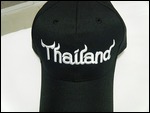
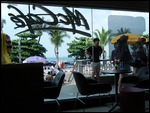
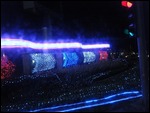

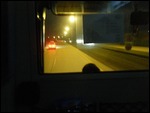


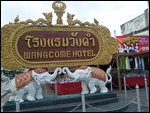
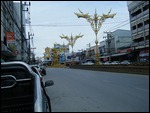
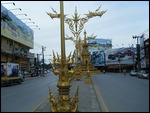
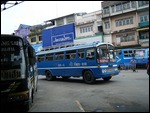






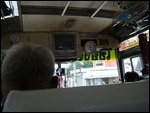

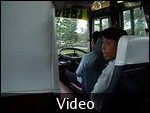
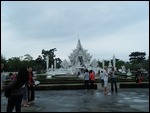
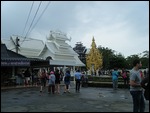
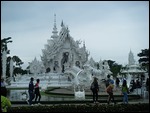

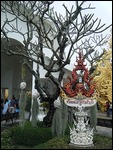
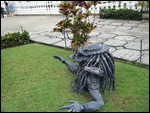
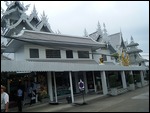
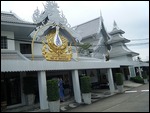
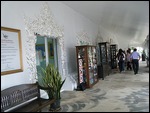
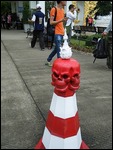
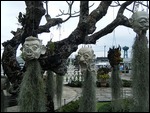
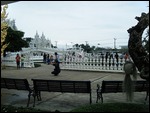

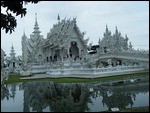
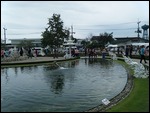
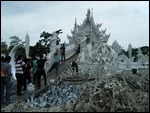
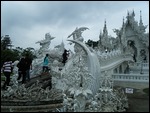
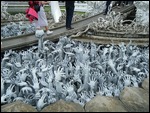
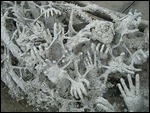
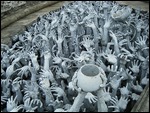
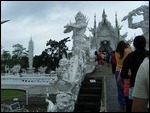
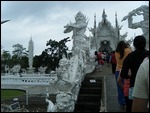


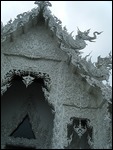
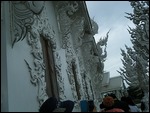
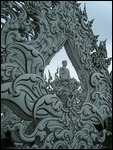
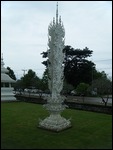

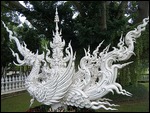
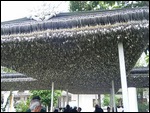
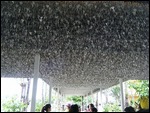
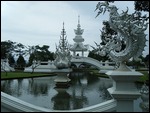
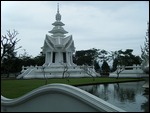
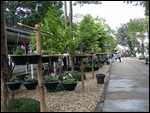
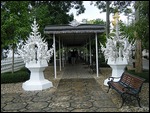
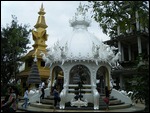
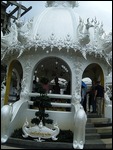
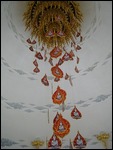
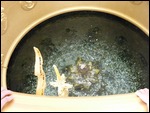
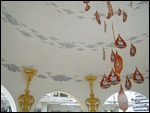
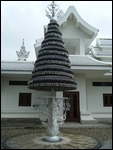
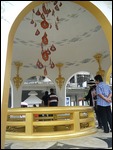
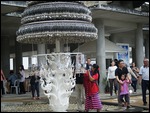
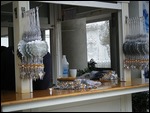
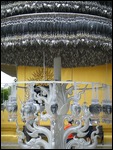
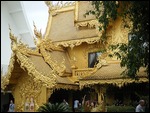
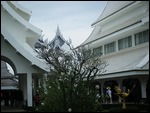
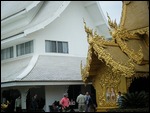

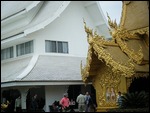
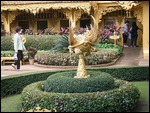

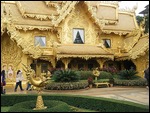
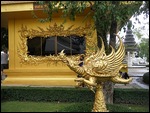
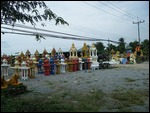
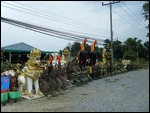

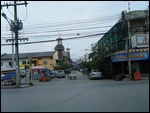
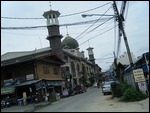
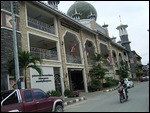
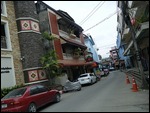
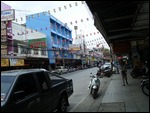
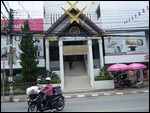

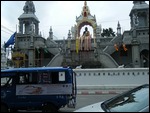
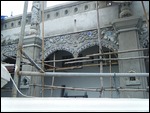
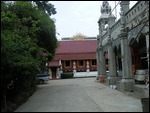
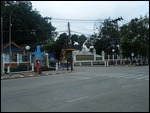
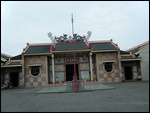
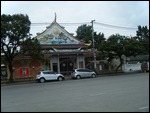
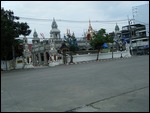
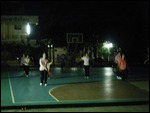
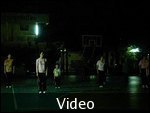
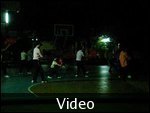
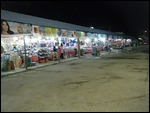
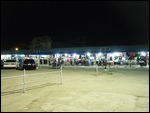
2025-05-22